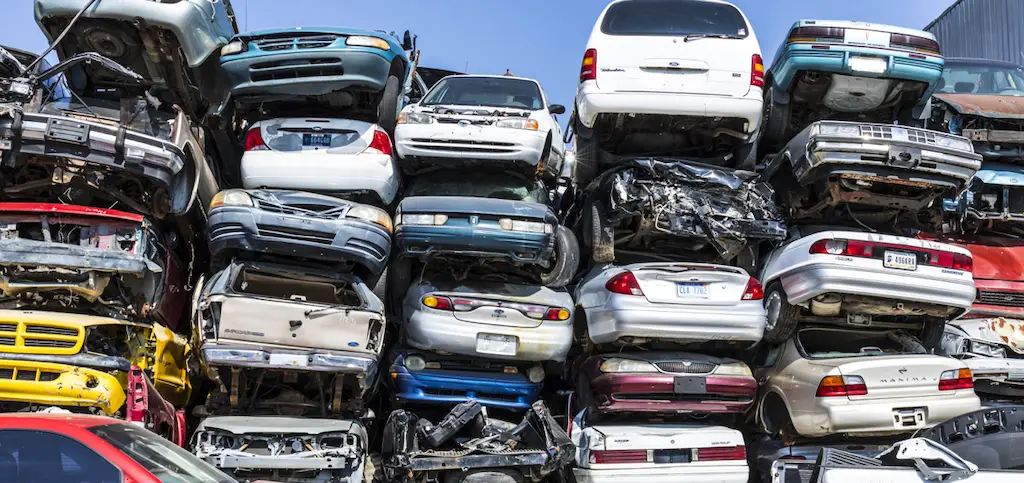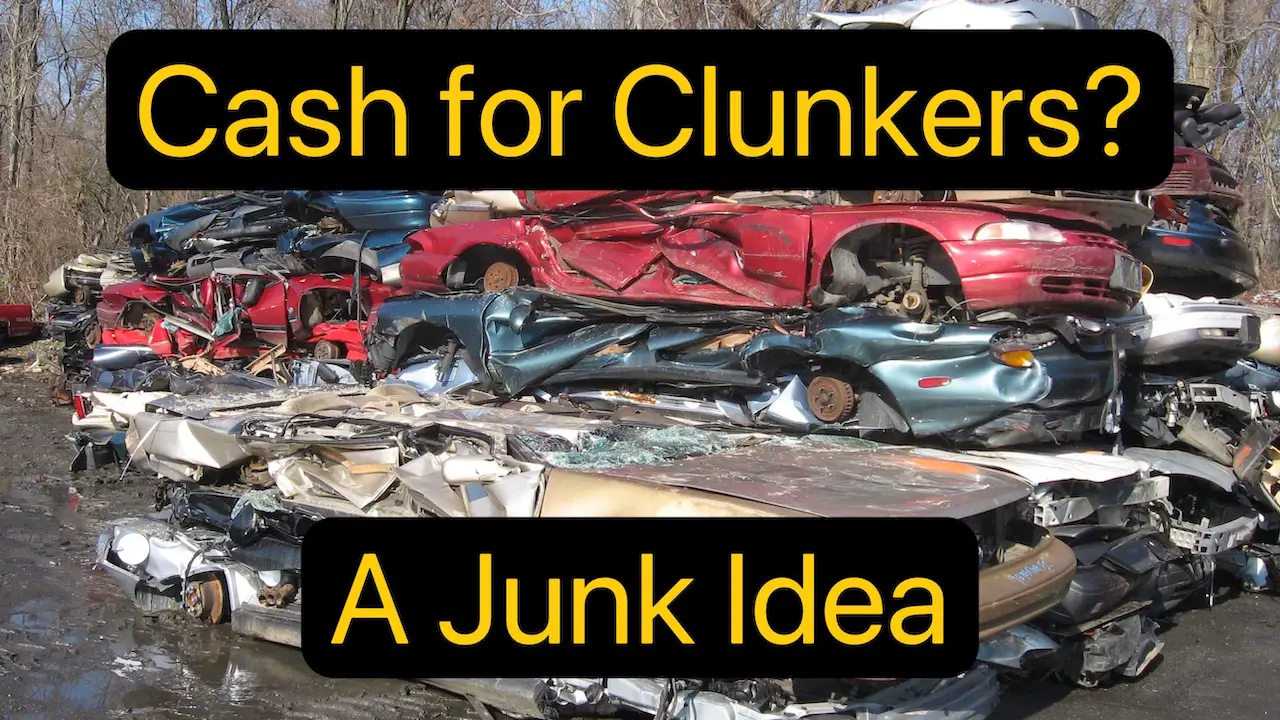Ever since last year, if you are living in the U.S, you may have noticed a few things. Nearly empty dealer lots, higher prices for used cars in general, large markup on the few remaining new cars at dealerships. But all have their roots in the same issue: there simply aren’t enough cars available on the market to meet demand from buyers, whether they be new or used. Why is this?
Some people will say it’s the chip shortage that is causing delays in manufacturing, while others will blame the broader COVID supply chain issues in general. But, this issue has been fermenting for years, and these only made worse a problem that was bound to get worse anyway.
Table of Contents
Cash for Clunkers Goals
The biggest reason car prices are so high? A closed automotive marketplace is the biggest, but the thing that exposed the issues of that marketplace was the 2009 Car Allowance Rebate System. Better known as Cash for Clunkers, it was a key policy component of the U.S. government’s response to the economic downturn of the 2008 Subprime Mortgage Crisis, it was designed with the following aims:
- To stimulate the economy in a time when consumer spending was down
- To help boost sales for GM and Chrysler to improve their cash flow; critical given they were in bankruptcy proceedings and had just received bailout money from the U.S. government
- To increase the average fuel efficiency of vehicles on American roads
The basic idea of this program was that if you traded in an older, fuel efficient car for the purchase of a new, more fuel efficient model, the federal government would subsidize the purchase of said vehicle to the tune of either $3,500 or $4,500, depending on how much more fuel efficient the new car was relative to the one traded in. The old car would then be scrapped and removed from the vehicle fleet so as to ensure that it would not continue to pollute.
The Problem?
In theory, sounds okay. In practice, it accomplished none of its desired effects. In a study of the effects of the program (link in the description below), 360,000 additional cars were sold in July and August of 2009 compared to if the policy hadn’t been implemented. This, however, was offset by a sharp decline in car sales 7 months later.
Translation? The additional sales attributed to Cash for Clunkers mostly represented buyers that would’ve purchased a new car anyway, but did it sooner rather than later to get the rebate while they could. In aggregate, it means that additional sales of new cars were net-zero overall in the best case scenario. Other studies have even suggested that the program, in fact, resulted in a net DROP in yearly car sales.
It was ineffective
However, it gets worse. The two companies that requested financial assistance, GM and Chrysler, only accounted for a quarter of the sales made in the program. And the only U.S-made cars to get spots the top-10 on the cash for clunkers sales chart were Fords; and they didn’t even request any money in the first place!
Am I blaming people for not buying GM or Chrysler products? No, as American cars of the 1990s and 2000s were complete pieces of crap I would never buy or recommend anyone to buy. But that isn’t the point. If the goal was to help struggling American automakers improve sales to get out of the bad situation they were in and to stimulate the wider economy, Cash for Clunkers accomplished absolutely NOTHING.
Any positives effects attributed to the program likely would’ve happened anyway
However, what about improving the fuel efficiency of cars on american roads? On this regard, the policy could be argued to have been a success.
The problem? Any improvement in fuel economy of vehicles on american roads is the result of a trend that PREDATES cash for clunkers. And furthermore, by preventing the components of vehicles traded in under the program from being recycled in any meaningful way, the U.S. government likely INCREASED carbon emissions, since most CO2 emissions from a car come from initial production. And, as I said before in my article explaining why buying a Tesla is a bad idea, you CANNOT CONSUME YOUR WAY OUT OF A PROBLEM CONSUMPTION CREATED!
This is because even if a few hundred thousand more fuel efficient vehicles are sold, there are nearly 200 million cars on the roads of America, so any meaningful change in fuel economy and emissions will take a LONG time to materialize.
Biggest impact? Screwing over the poor

However, the worst part of the program was its impact on the car market in general. Through the cash for clunkers program, nearly 3/4 of a million cars were scrapped, and one of the conditions of this program was that the engines were to be destroyed; preventing the car from ever running again. Nor could other parts be salvaged off of these cars per the programs requirements.
Again, contributing to rising emissions due to additional recycling and production, but, more importantly also making repairs more expensive on existing cars. The caveat is that the absolute cheapest of cars that would’ve been available were instead scrapped under the scheme
Unfortunately, outside of the unaffordable urban cores of older, east coast cities, the reality for most Americans, rich and poor, is that if you want to get anywhere, you have to drive.
This, in practice, adds a buy-in price for economic participation in America, as getting to any resource, whether it be work, food, or entertainment, necessitates owning a car. While this cost is easier to bear for the (shrinking) middle class and above, it is a BIG problem made even more difficult for the poor.
Often, these people are working minimum wage, low skill service jobs that cannot be done remotely. You don’t show? Manager easily fires you and you are replaced. But wait, there’s more!
In America, if a person loses their job, they also lose their health insurance and other benefits. And for people with a condition like diabetes that necessitates insulin or some other medication/hormones, no health insurance renders the medication unaffordable. Cutting their access off? You may as well be handing them a death sentence.
This means, even those least able to afford a car MUST have one if they want to keep their head above water, and they need the absolute cheapest of cars so they can still afford to eat and pay rent. What type of cars did cash for clunkers disproportionately take off the road in large numbers? Why, the cheap beaters that were the only cars that the poorest americans could barely afford in the first place, of course!
And its not like new car prices have become more affordable either, they haven’t. Since 2008, new car prices have gone up 66%, and are on track to surpass $50k NEXT YEAR should current trends continue. And in an environment where nominal wages have remained stagnant for a half-century, buying a new car is harder to stomach than ever. This means there is more competition for the used cars remaining, further pushing up prices and making life more difficult for the poor.
Summary
So why are cars so expensive now? Why is there a shortage? Once again, it boils down to a failed U.S. government policy publicly touted as a means to save the country, but in reality, it was thinly-veiled corporate welfare that ended up screwing over the poorest Americans. And once again, the politicians, being politicians, claimed victory on top of the ash heap.
